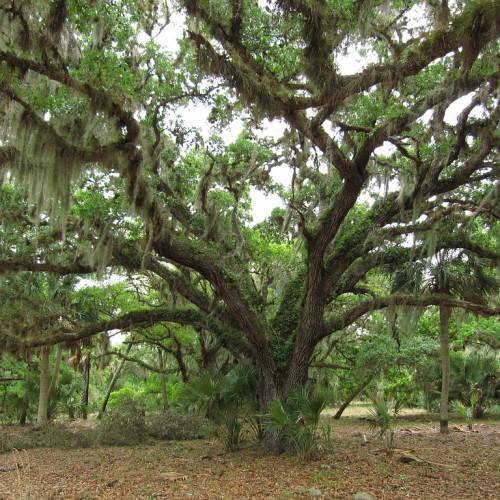
live oak
Quercus virginiana
Cycle:
Perennial
Watering:
Frequent
Hardiness Zone:
8 - 10
Flowers:
Flowers
Sun:
Full sun
Leaf:
Yes
Growth Rate:
High
Maintenance:
Low
Drought Tolerant:
Yes
Salt Tolerant:
Yes
Care Level:
Medium
watering
Live Oak trees require regular watering during the summer months, especially during periods of prolonged drought. In general, Live Oak trees need about an inch of water, either from irrigation or rainfall, every week. In addition to weekly waterings, Live Oak trees should receive a deep water about once a month, wherein the soil is irrigated for a period of several hours to help the tree access deeper layers of water and nutrients. During periods of intense heat, Live Oak trees may need more frequent waterings than once a week to avoid stress and potential dieback.
sunlight
Live oaks, which are a species of oak tree (Quercus virginiana), thrive best when exposed to full sunlight for approximately 6 to 8 hours a day. This amount of exposure is optimal for live oak growth, development, and overall health. During the warmer months, when the sun is shining for an extended period of time, it is ideal for live oaks to soak up the rays. During winter months, when the days are short and the sunlight is less direct, the amount of exposure will need to be reduced in order to prevent sunburn.
pruning
Live oaks should be pruned twice annually - in late winter to early spring and midsummer. Pruning in winter removes dead, dying, and diseased parts of the tree as well as low hanging branches that can be hazardous. Pruning in summer helps reduce insect and fungal problems, plus decreases the amount of water lost through evapotranspiration. Pruning should be done by removing no more than 1-third of the canopy at any 1 time, and no more than 1-sixth of the length of any branch. It is especially important to look for any crossing branches and remove 1 to prevent rub wound. All pruning cuts should be made close to the branch collar.
